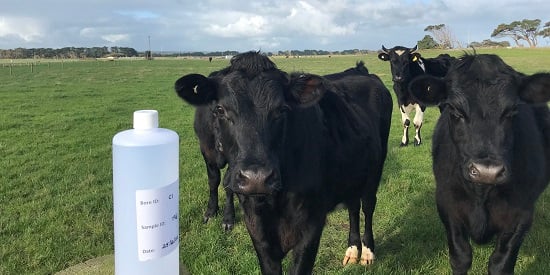Researchers evaluate cost-effective carbon capture and storage
Media release
Deakin engineers have begun a major research program at the world's largest carbon capture and storage (CCS) demonstration project, near Port Campbell in south-west Victoria.
The CO2CRC's Otway National Research Facility is Australia's first demonstration site for geological storage of carbon dioxide (CO2).
Professor Wendy Timms from the School of Engineering said the project by Deakin's water tracer technology team would help demonstrate the environmental performance of the deep geological storage site.
"CO2 has been safely stored at the Otway facility for more than 10 years. Our research will focus on reducing the cost of long-term CO2 storage monitoring," Professor Timms said.
The site includes more than 1.5 kilometres of rock that acts as natural barriers to deep saline aquifers and buried carbon dioxide.
Professor Timms said the research team would develop new ways to track variations in water quality in the shallow groundwater above the natural rock barriers.
"Part of our research will track the normal variation in CO2 activity in the soil and shallow groundwater because this can change over time, depending on rainfall and land use activities. This understanding of natural patterns will allow us to detect other changes that occur below the surface for any reason.
"The information we gather will improve monitoring of soil gas and shallow aquifers and lead to more cost-effective technologies at carbon sequestration sites around the world," Professor Timms said.
The Otway National Research Facility was established in 2008 to demonstrate that CO2 could be safely captured, transported, injected and stored in different geological formations underground with the overall goal of mitigating global climate change.
The process involves injecting CO2 into a sandstone reservoir at depths of greater than 1.5km where it is trapped in the pore spaces of the rock and gradually turns into rock minerals over geological periods of time.
The International Energy Agency has identified CCS as a fundamental technology, essential to achieving global emissions reduction targets at the lowest cost. There are 59 large-scale CCS facilities globally – 21 in operation, three under construction and 35 in various stage of development. The largest operational project (Gorgon LNG CO2 Injection Project) is located in Western Australia.
CO2CRC Chief Operations Officer, Dr Matthias Raab, said the Deakin study was part of the third stage of research at the facility.
"This partnership with Deakin allows us to build on a decade of successful monitoring research and look for cost reductions that could enable the development of more commercial CCS projects that have significant community and environmental value as Australia and the world adapts to climate change," Dr Raab said.
Professor Timms said the project was a fantastic opportunity for Deakin to be involved in research to mitigate climate change.
"We can apply our expertise to develop leading practices that improve environmental performance and reduce the costs of these important engineering projects," Professor Timms said.

